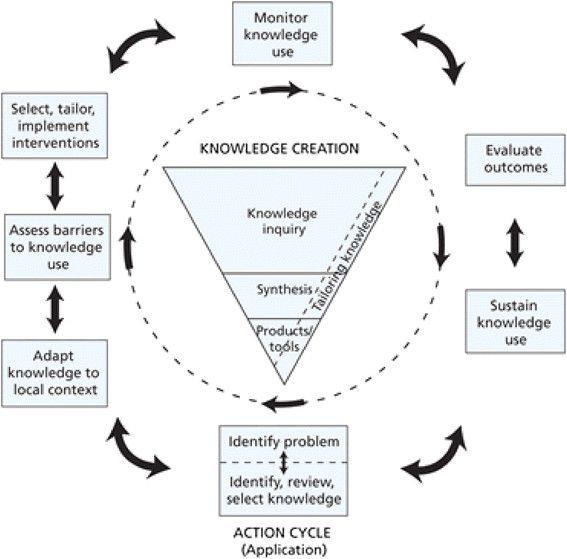Introduction
The translation of research into practice is one of the most pivotal responsibilities of nurse leaders in any organization. As a result of the need for reforms in nursing education discussed by McCabe (2006), it is expected that nurses will apply evidence-based practices (EBP) in their daily routine, thus renovating services to make them more transparent and effective. To ensure that the abovementioned outcome, research should also be conducted in terms of EPB models or frameworks.
From the variety of options, the Knowledge to Action (KTA) framework seems to be the most relevant for a Home Health Care Agency. According to Field, Booth, Ilott, and Gerrish (2014), the identified framework aims at improving implementation efforts and consists of such components as knowledge creation and an action cycle (Figure 1).

Guiding Translational Projects
Since the Home Health Care Agency is an organization that provides different care for every patient in various situations, the EBP framework should ensure adjustment to local contexts, which is one of the key provisions of KTA. One important area is assessing barriers on the way to the project implementation and its further continuous monitoring, which is also covered by KTA. Those patients who need home health care usually require specific services, and KTA is flexible enough as its phases may be adopted both simultaneously and sequentially (Field et al., 2014).
The dynamic character of the identified framework meets the goals of the Home Health Care Agency, especially its paramount mission of assisting people in changing their daily lifestyles for the better. Thus, it becomes evident that KTA will be beneficial for collecting necessary data, initiating intervention strategies, and analyzing outcomes.
References
Field, B., Booth, A., Ilott, I., & Gerrish, K. (2014). Using the knowledge to action framework in practice: A citation analysis and systematic review. Implementation Science, 9(1), 172-186.
McCabe, S. (2006). What does it take to make a nurse? Considerations of the CNL and DNP role development. Perspectives in Psychiatric Care, 42(4), 252-255.
